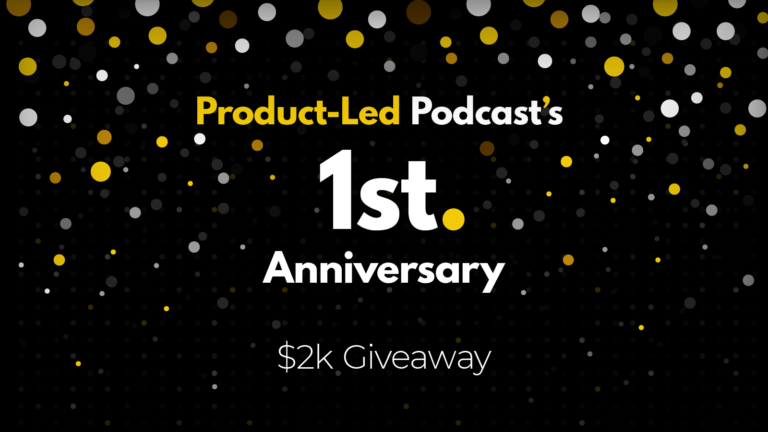If you’re going to be successful in business, you need to convince potential customers that your product is the only one for them.
To do this, you need to promote the product without sounding too sales-y – which is where product-led content marketing comes in.
With highly-targeted blog articles, you can push readers to buy your product by demonstrating how it solves a specific pain point. In this post, we’ll show you some examples of product-led content and explain how to create the perfect product-led article.
Contents
- What is product-led content?
- Why is product-led content still under-used?
- How product-led content marketing drives success
- How to craft a winning product-led article
Product-led content is both flexible and powerful. Let’s get into it.
What is product-led content?
Often taking the form of user guides, how-to listicles, and especially blog articles, product-led content puts a product at the heart of the content’s narrative, but does so without a hard-sell.
It demonstrates how the product is the solution to a problem the reader has. It identifies pain points they’ll likely experience, showcasing how their product can help.
For instance, if you’re selling manual and automated testing solutions, your target reader might be an app developer who’s struggling to release software quickly.
As a result, they may search for a solution using the terms “speed up software release cycles and keep quality”.
An article with a title such as “How to Speed Up Software Release Cycles and Maintain Quality” would address the main issue and explain how testing can help.
Within the educational nature of the content, you can position your product as the “hero” that provides the best solution to the problem.
Why is product-led content still under-used?
Despite the benefits, product-led content is not used as much as it could be.
Why is this?
1. It requires in-depth knowledge of the product
Creating an effective product-led article requires knowing the product inside out, so you can highlight its capabilities correctly. If a company wants to convince customers that its online secure file sharing product keeps documents safe, the article should describe the security protocols in perfect detail.
Although its rewards are worth the time and effort, this sort of content isn’t the fastest and easiest to churn out. Marketers may prefer to harness the benefits of interactive marketing campaigns.
2. It requires marketers to constantly update customer data
Content marketers are aware of the need to get details right (see chart below). For product-led content, getting the customer data right—so you can emphasize the needs of the user—is crucial.
For example, if you’re promoting CRM software, you can include a statistic that shows why it’s important to house customer data in one place.
However, sourcing the latest data is time-consuming, which means some marketers may prefer to use another form of content marketing.
3. It doesn’t follow the usual marketing metrics
Product-led content marketing isn’t necessarily driven by common metrics such as click-through rate, which can reveal which topics are popular with audiences. You still need to consider search volume, but be aware that it may be lower and the keywords will be high-intent keywords.
Let’s say you want to highlight how your marketing automation tool amplifies growth. You can do it by targeting relevant keywords connected to a topic such as how targeted email campaigns can drain an SME’s time and resources.
By doing so you are addressing a pain point your potential users might be facing and, with the help of keywords, positioning your post to appear higher up on the search engine’s results page. Within your article, you can suggest how an automated tool would be a big help.
How product-led content marketing drives success
Now let’s take a look at the main benefit of focusing on product-led content.
1. It educates customers without being too pushy
Telling a compelling story in non-sales-y language means you can empathize with your audience from the start and grab their attention. Show that you understand their situation, challenges, and difficulties.
Get it right and the audience won’t feel like they’re being pushed towards a product. By letting them know your product’s the answer they’re looking for, you’ll educate them about your brand as a whole.
2. It establishes a brand as a solution to customers’ pain points
Marketers are aware content often works best when it’s used to tell stories. As noted, product-led storytelling works because it works hard to earn an audience’s trust.
For example, PandaDoc is producing an article addressing how a business can go paperless. The piece’s aim is to demonstrate how brands might do that. But for PandaDoc, the aim is to champion itself as a hero.
3. It assists with customer acquisition
Attracting leads that result in acquisitions is a big challenge for content marketers. The picture-painting approach of product-led content helps you establish better-quality leads, because the target audience understands not only what a product can do, but how it can solve a problem.
For instance, PandaDoc demonstrates the need for non-compete agreements (and thereby promotes its contract-creation software) by mentioning the prevalence of related lawsuits in the US.
4. It helps throughout the buyer journey
Because they directly address customers’ needs, product-led articles are flexible in how they can be used during the buyer journey. If you do your research, discover pain points, and target them, you can use product-led content wherever you want in the funnel.
If your audience is at the top of your funnel, your content can educate and address a specific pain point they may have. The blog post in the example below clearly does this. It provides a step-by-step guide to help the reader solve their problem.
Articles can target readers in the middle of the funnel with more detailed information such as as in the example below. These will place your product at the forefront and provide evidence as to how your product will be able to help your audience.
Your product-led content can also provide value to readers at the bottom of the marketing funnel. Content such as product tours and demos will help validate their decision that your product is the right one for them.
How to craft a winning product-led article
Now we understand the benefits of product-led content, let’s dive deeper into how you can create it for your audience.
1. Know your product and use it as inspiration
Armed with the correct details and data, and a thorough understanding of your product, you can get started on your product-led article.
At PandaDoc, we ensure that all our content marketers paint a vivid picture for our target readers—and that each article sets up one of our products as the “hero” of the story.
For example, perhaps you’re tasked with promoting a digital waiver product. Our tip would be to put together an educational blog post explaining exactly what a waiver is, and why a business would use one. Or you could create a comparison of the top solutions on the market.
For either of these options, you’ll need to use your in-depth product knowledge to position it as the best choice for users. In the example below, the writer casually mentions that PandaDoc provides a template to make waiver creation simple and fast.
2. Find the balance between product and content creation
Now, writing product-led content may not be the easiest thing for those getting started, but there is a saving grace. Finding the balance between sympathizing with the customer and promoting your product isn’t as hard as it may seem.
You need to avoid anything that seems like a hard sell, and instead focus on subtle nudges toward your solution. It’s a good idea to introduce your product through casual examples. For instance, in an article about electronic signature software, you could say:
“When you send a contract out, you need to know that the client has read and signed it. Some software (like PandaDoc) sends you notifications when this happens.”
or: “In the interest of speeding up the signing process, it’s useful to get real-time notifications—just like you do with PandaDoc.”
3. Create content with the buyer in mind
You can only present your product as the answer to your customers’ problems if you have their best interests at heart – and create content that appeals to those interests. But how do you discover what their major pain points and concerns are?
At PandaDoc, we use a combination of techniques, including feedback from customer surveys, data from our CRM system, and keyword research. Once we’ve identified the most common topics raised by customers, we can create content that keeps potential buyers in mind at all times.
For example, if you were going to write about a free pdf compressor, you’d need to search through your data to see what people are asking about. One of the issues you may discover is that prospects are concerned about maintaining the quality of documents and images during compression
If so, you should angle your article to address those worries. You could state that the best compression tools don’t compromise file quality—and make sure to mention that your product fits into that category. This will reassure the buyer and generate trust in your brand.
Product-led content is both flexible and powerful
Going down the product-led content route means taking a different approach to content marketing. Yet, owing to its flexibility and trust-winning nature, this route can be very powerful in driving brand engagement and customer acquisitions.
As long as you focus on identifying your target audience’s interests and concerns, you’ll earn the right to introduce your product as a hero, and then that all-important call to action.
The secret is demonstrating you care about the concerns of your customers, as well as about your own product. Empathy is the key – success is the reward.









